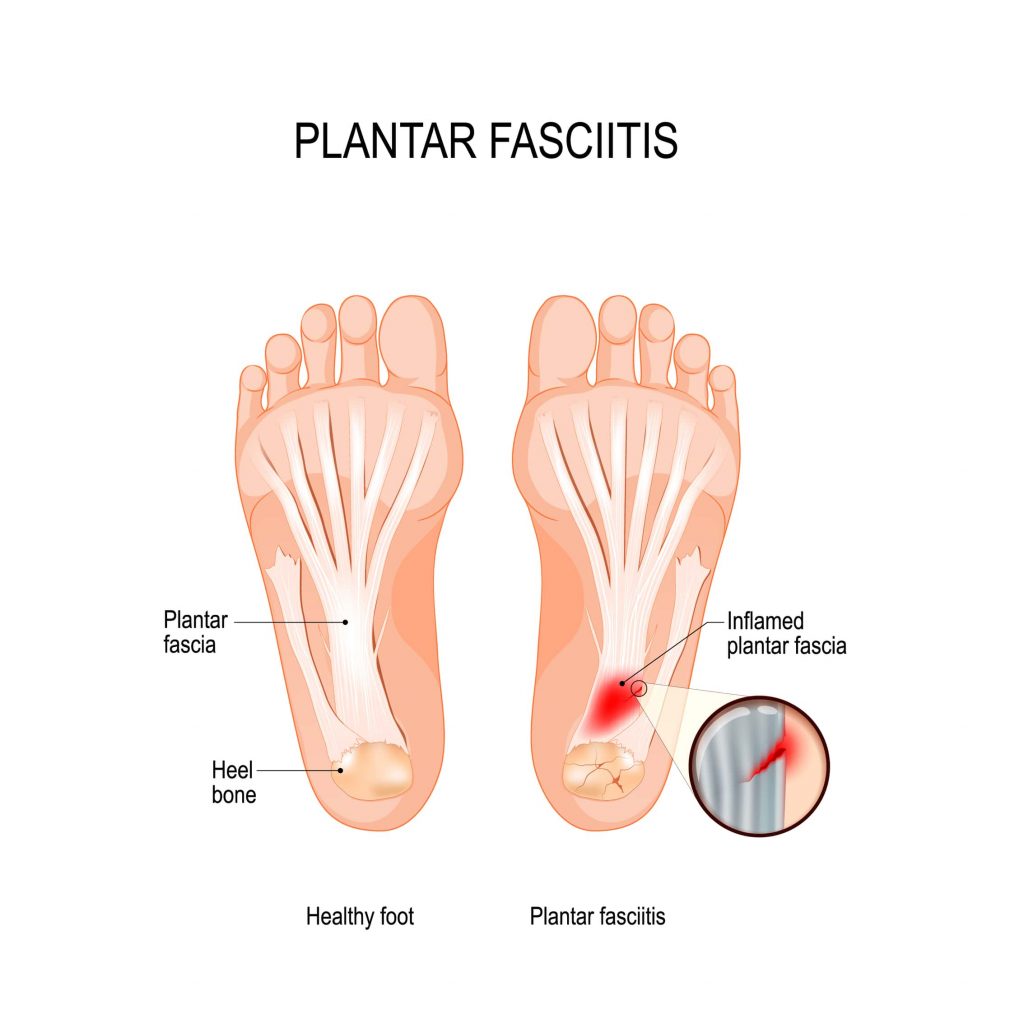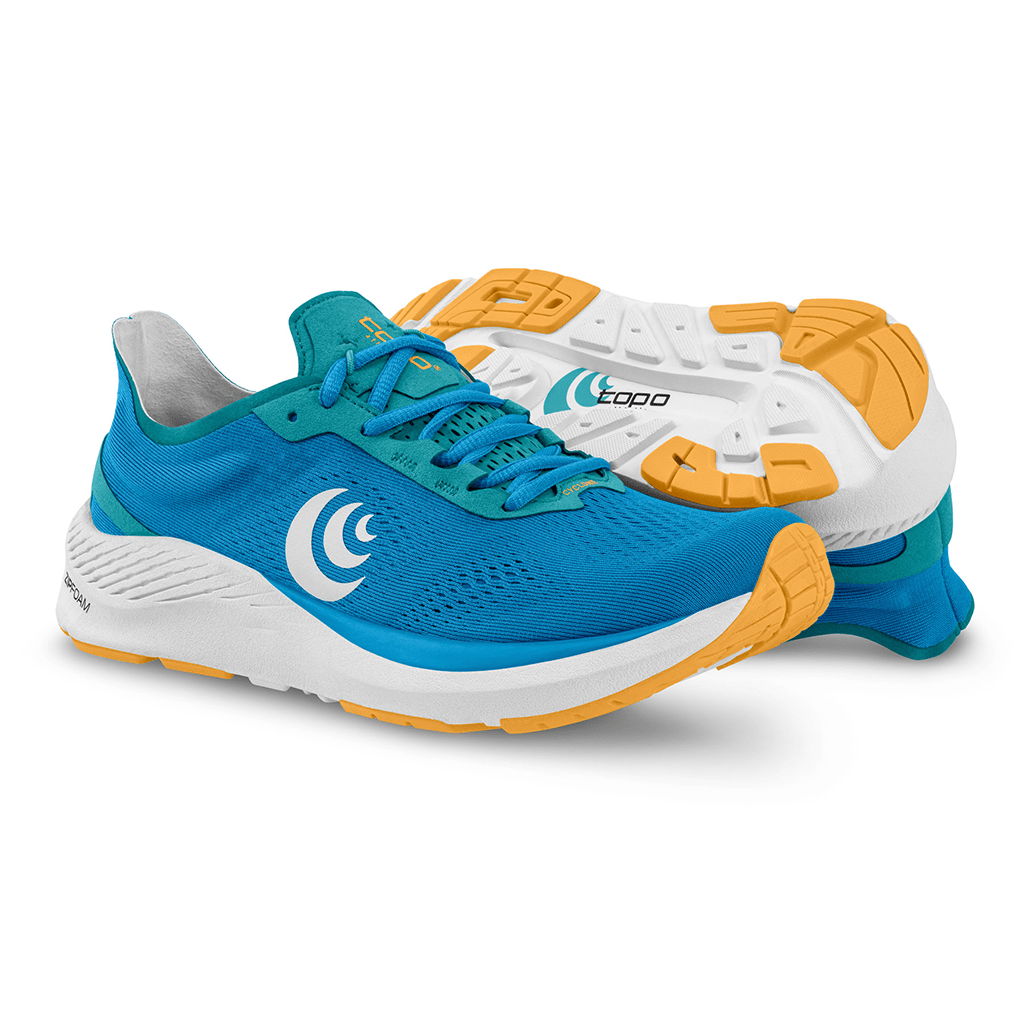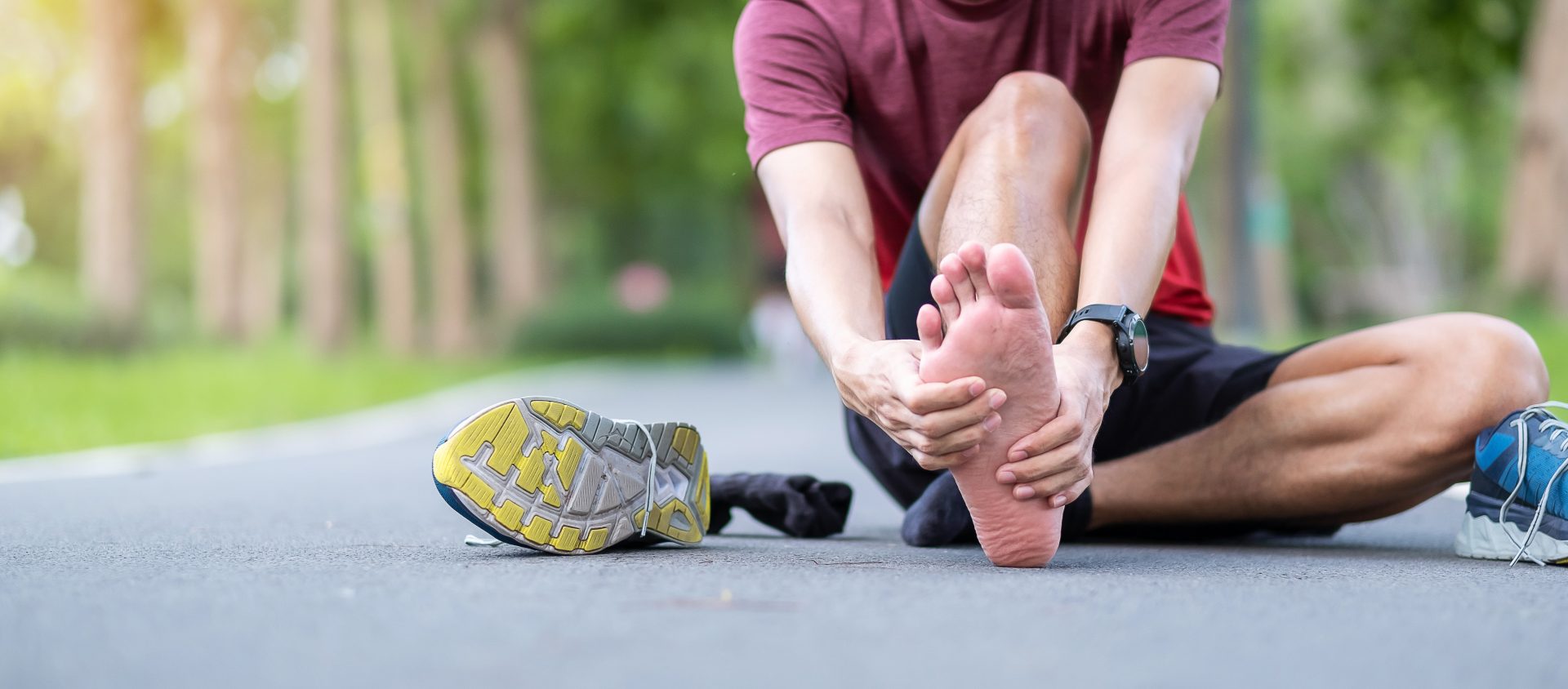If you are experiencing heel pain while running, you need to know if you actually have plantar fasciitis. If in doubt, always consult a doctor, physical therapist, or another appropriate medical professional. But generally, a quick self-diagnosis should be fairly easy, as you will already be feeling a lot of discomfort and pain around the heel area. Just as with any sports injury, it is best to rest and recover before pushing your body to run again. However, you might not want to break a running streak, or simply want to keep pursuing it as an exercise. If so, you’re probably frantically wondering “can I still run with plantar fasciitis?”
Take a look at our guide below as we talk about some of the best ways to run with, treat, and prevent plantar fasciitis. For now, put your feet up for a few minutes and read up on these handy tips for runners with heel pain.
What is plantar fasciitis?

The plantar fascia is a tough ligament that runs from the balls of your toes to the base of your heel bone. Its primary purpose is to redistribute impact shock from your calf muscles to the balls of your feet. It also helps to support the arches in your feet when propelling your body forward to walk, run, jump, and hop. Plantar fasciitis is the term used to describe any foot pain in the area between your heel bone and toes. With all the impact your feet receive when running, it is no wonder that plantar fasciitis is commonly developed amongst long-distance runners.
5 common symptoms of plantar fasciitis
- Pain is experienced in the plantar fascia during push-off while running
- Pain shoots through the sole of your foot when you take your first steps in the morning
- You feel a sharp stabbing pain or throbbing ache in the arch of your foot
- Pain in the arch of your foot or heel gets worse after extended periods of sitting, standing, or strenuous activity
- Heel may be tender, achy, and swollen
What are the common causes of plantar fasciitis?
Because the role of the plantar fascia is to transfer power, it gets injured when it experiences a sudden increase of force. For runners, a major cause of plantar fasciitis is not wearing supportive running shoes. The heel pain can also be brought about by a runner who repeatedly pushes off during a race. Other people may develop heel pain after changing shoes (i.e. wearing heels all day then flats at night), wearing thongs for extended periods of time, or simply walking more than usual while on a holiday. Anyone who is pregnant, is flat-footed, has high arches, is overweight, runs on hard surfaces, or spends a lot of time doing strenuous activity that overuses either heel bone are also prone to developing plantar fasciitis. The extra stress on the plantar fascia causes it to get inflamed and start breaking down.

So… can I still run with plantar fasciitis?
In some scenarios, you may still be able to still run with plantar fasciitis. But as with many other sports injuries, always listen to your body and stop when it tells you to. Get it checked out by a professional and seek physical therapy if needed. Some people have more serious cases of plantar fasciitis and may need to lay off the running for a while so they can get the issue fixed. Continuing to run with plantar fasciitis pain can exacerbate the problem and cause more damage in the long term.
Experienced runners who suddenly have plantar fasciitis should take a break from running and focus on stretching to treat the affected area until the pain subsides. Once you recover, slowly work your way back up to the running intensity you were at before getting the injury. New runners who already have plantar fasciitis should try walking first before starting to jog then run. Rest a few days between each run and ice your heel after each workout. Anyone who experiences chronic plantar fasciitis should consult a medical professional before taking on any form of exercise. So in regards to your question “can I still run with plantar fasciitis”, the short answer is that it depends on your personal context.
How to treat runners’ plantar fasciitis
Luckily, it doesn’t cost a fortune to relieve the pain of plantar fasciitis. Ask any medical pro “can I still run with plantar fasciitis?” and they will surely say that the best way to recover is to get some rest. You should visit a physical therapist, podiatrist, physiotherapist, or another relevant medical professional immediately if symptoms worsen. You will receive a physical exam to get an accurate diagnosis of the root issue and guided on the appropriate course of treatment. While mild cases can be easily remedied to relieve plantar fasciitis pain, these are not a long term solution to the root issue. That being said, here are some quick and easy ways to ease painful symptoms of plantar fasciitis:
- Take an anti-inflammatory pill
- Try different strapping techniques
- Roll a golf ball or cold water bottle over the arch
- Receive cortisone injections
- Practice plantar fascia stretching exercises
Ways to avoid heel pain from running
Plantar fasciitis can be avoided by making some simple adjustments to your running habits. For one, you should always warm up thoroughly prior to running. Ice after your workouts and stretch regularly too. Simple exercises that focus on building your calf muscles can help strengthen your plantar fascia. But it is best to consult a physiotherapist to determine the right intensity of exercise for your body.

And finally, the right running gear can do wonders for reducing the risk of developing a heel injury. Orthotic inserts like heel seats and quality running socks can help to reduce any potential fatigue and cushion your feet during each run. Plus, they are super comfy to wear! And if you’re wondering where to get your eager hands on some top quality gear, Pure Running stocks some of the best running apparel and running shoes online. So the next time a mate asks “can I still run with plantar fasciitis?” out loud, you know what to get them for Christmas.









